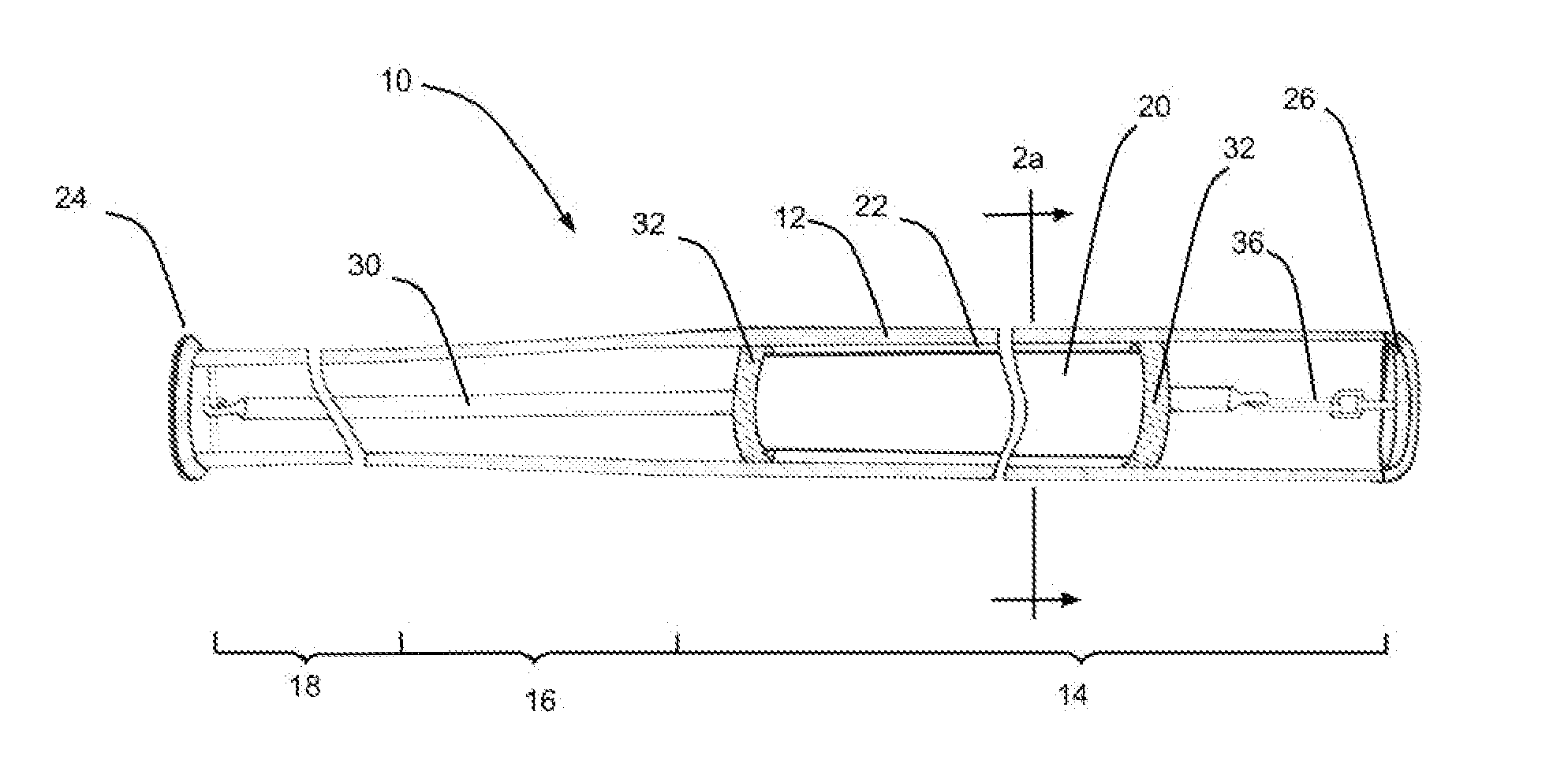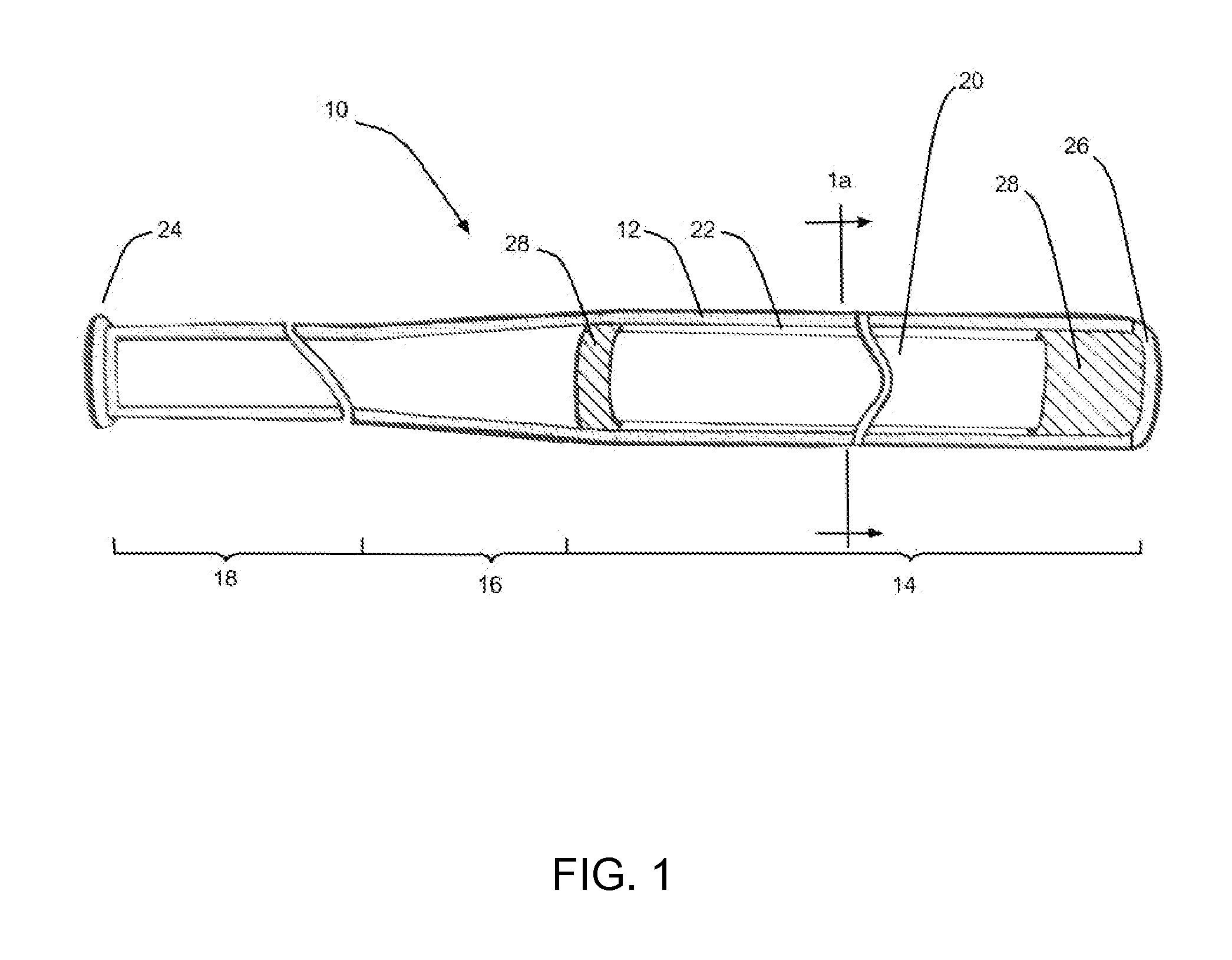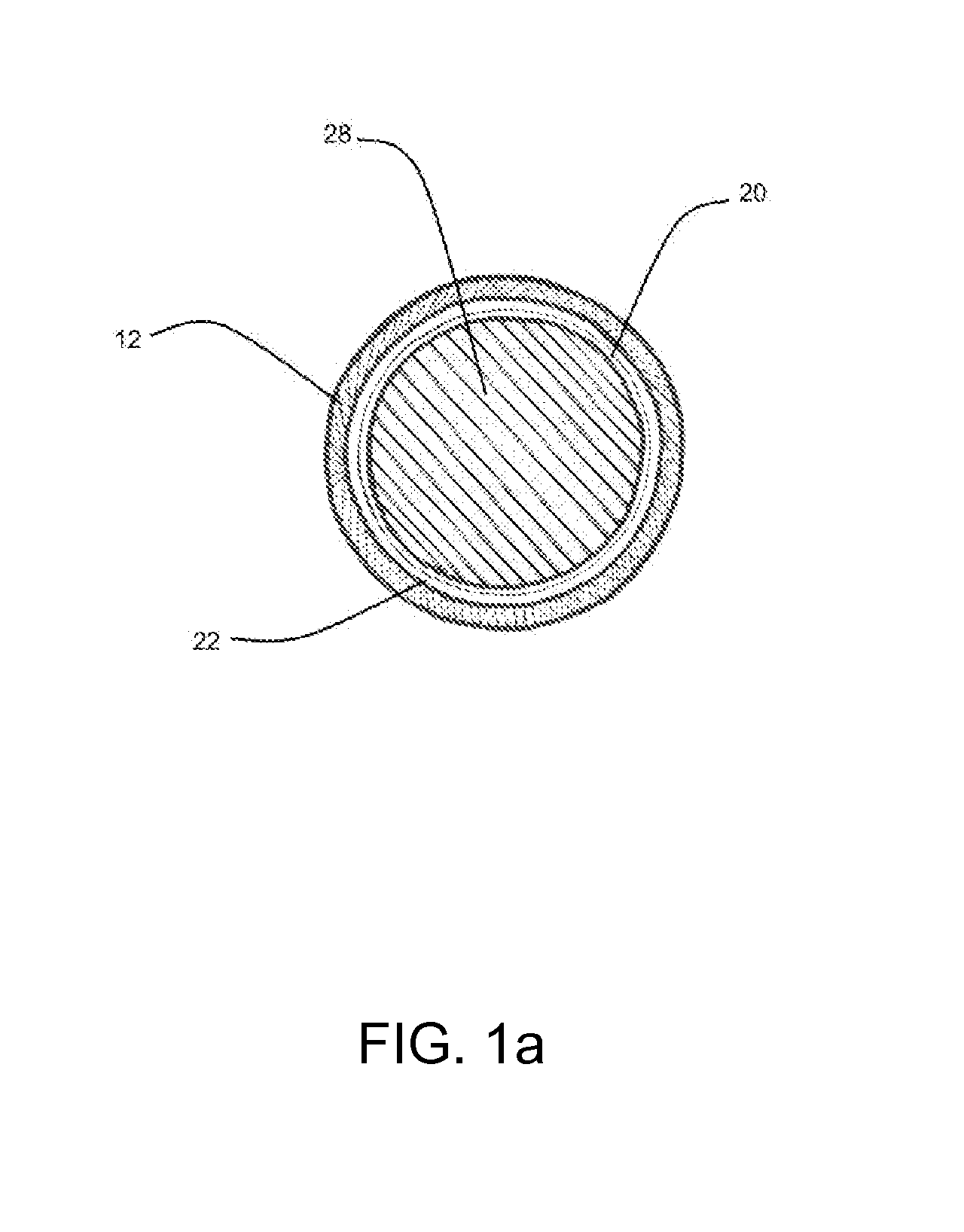Baseball Bat
a bat and ball technology, applied in the field of baseball bats, can solve the problems of reducing the life of the bat, dents or dings on the bat, and the bat outperforms the traditional wooden bat, so as to improve the rebound effect and dampen the vibration, the effect of easy manufacturing
- Summary
- Abstract
- Description
- Claims
- Application Information
AI Technical Summary
Benefits of technology
Problems solved by technology
Method used
Image
Examples
Embodiment Construction
[0030]While preferred embodiments of the present invention have been shown and described herein, it will be obvious to those skilled in the art that such embodiments are provided by way of example only. Numerous variations, changes, and substitutions will now occur to those skilled in the art without departing from the invention. It should be understood that various alternatives to the embodiments of the invention described herein may be employed in practicing the invention.
[0031]Referring to FIG. 1, a bat 10 has a tubular aluminum frame 12 with a relatively large-diameter hitting portion 14, an intermediate tapering portion 16, and a relatively small-diameter handle portion 18.
[0032]To provide for an improved rebound effect to better transfer of energy from the bat to a ball, the present invention provides for a tubular insert 20 to be suspended within the hitting portion 14 of the frame 12. The insert 20 has an outer diameter less than the inner diameter of hitting portion 14. As ...
PUM
 Login to View More
Login to View More Abstract
Description
Claims
Application Information
 Login to View More
Login to View More - R&D
- Intellectual Property
- Life Sciences
- Materials
- Tech Scout
- Unparalleled Data Quality
- Higher Quality Content
- 60% Fewer Hallucinations
Browse by: Latest US Patents, China's latest patents, Technical Efficacy Thesaurus, Application Domain, Technology Topic, Popular Technical Reports.
© 2025 PatSnap. All rights reserved.Legal|Privacy policy|Modern Slavery Act Transparency Statement|Sitemap|About US| Contact US: help@patsnap.com



